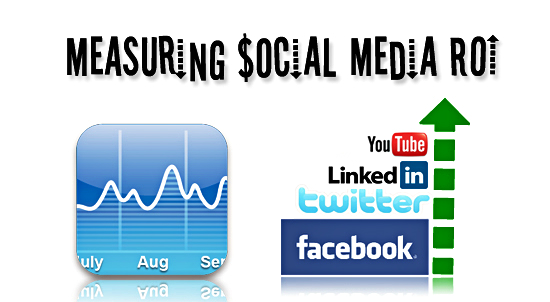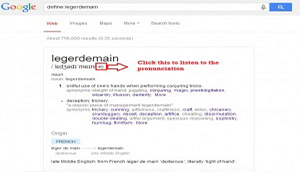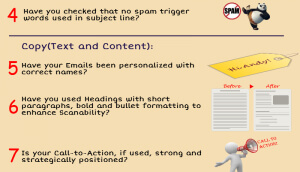An increasing number of business owners are now convinced that Social Media offers massive potential which can be effectively leveraged for the growth of their business and have been devoting resources to making it an essential element of their marketing plan. However, most of them are finding it difficult to ascertain the effectiveness of their campaigns and to measure the Return on investment to justify campaign expenditure.
Why ROI is important
After all, it is the bottom line that matters the most to any business and every business owner would want to know if all the time and money being invested in Social Media is making any difference to it. In addition to this, the inability to measure returns from a campaign makes it difficult to optimize it because it is extremely difficult to manage and optimize something you can’t measure.
The Challenge in Calculating ROI
The textbook definition of ROI (the benefit from the activity divided by the cost input into it) is difficult to measure when it comes to Social Media because a large number of its benefits are qualitative(visibility, brand awareness, customer loyalty, trust and interaction) which cannot be accorded a fixed numerical value. And given the number of metrics that can be tracked, if you don’t choose the right ones for you, the calculations will just go nowhere. Methods and models to measure ROI are constantly evolving but no standardized best practice has been developed yet.
This is not to say that ROI cannot be measured. It is absolutely necessary and can definitely be done but it’s just that there is no One-Size-Fits-All method for all businesses. The calculation is wholly business-specific – every business has different goals and objectives and different metrics have to be employed to evaluate those targets. For example, a business which sells products online can calculate its ROI from Social Media more easily than one that doesn’t. Hence, it is extremely important that effectiveness of the campaign is measured in the context of one’s business goals to help determine its business value.
Defining Business Goals
You need to clearly define the outcomes and purpose for your Social Media Strategy – why you are doing it, what exactly do you want it to achieve and by when. This will differ from company to company and will include end-results like:
- Increase brand awareness
- Lead generation
- Increase traffic to website
- Increase Customer Acquisition
- Increase sales and revenue
- Engage with Customers
- Establish trust-based relationships with Target Audience
- Reduce customer service cost
- Improve customer retention and loyalty
Measuring Intangible Benefits
Intangible benefits from Social Media – visibility, brand awareness, customer loyalty, satisfaction, trust and valuable customer interaction and feedback offer long-term business benefits. If the purpose of your social media strategy is to increase brand awareness and build an engaged and relevant following, then the key metrics like Reach, leads, Engagement and number of Fans/Followers would need to be tracked using Insights, Facebook’s built-in analytics tool or other applications. The data obtained can also be improved upon and by adding one’s own metrics such as post reach or post engagement relative to the number of fans.
Further, data concerning popular perception, feedback and sentiment about your brand can be gauged using tools such as SocialMention or Radian6. A good understanding and analysis of these metrics can help measure the effectiveness of the campaign in the context of building brand awareness.
Measuring Tangible Benefits
Website traffic, leads, conversions and sales are the most important metrics for a business which directly impact profitability. Google Analytics is an excellent free tool to track the number of website conversions that come from your various social media accounts while other paid tools like MozAnalytics and KissMetrics are also available. Keeping track of advanced metrics like Cost-per-lead and Cost-per- conversion help give a better assessment of the campaign and make it easier to quantify benefits relative to the cost of acquiring them.
Returns from Ad campaigns
Choosing whether to run a Facebook Ad campaign or a Google Adwords campaign for a better ROI depends entirely on the type of business, product/service and targeted audience. Facebook Ads offers extremely niche targeting and a number of Ad types to choose from but they typically tend to convert lesser than Google Adwords campaigns. However, Facebook Ads are much cheaper to run and hence, most often result in a better return on money spent. Eventually, the best way to choose between the two, from an ROI perspective, would be to try out both and see which works best for you.
When it comes to Social Media Ad campaigns, tracking returns on Ad spends is a much easier process than arriving at the net return from the entire social media campaign. Facebook Ad Analytics allows you to track conversions that happened on your website from of each of your Ads using the Conversion-Tracking option. This is done by placing a code provided by Facebook called an Offsite Pixel on your website which alerts Facebook once your conversion is complete. Facebook then gives you data on the number of conversions from each Ad and the Cost-per-conversion. Apart from helping arrive at an accurate value for Return on Ad Spend, this also helps optimize the campaign by determining which ads are performing better than others.
Arriving at the campaign ROI
All the Metrics and Data that we just discussed are not ROI. They are just indicators which dissect each portion of your campaign and tell you how it is performing. Each metric will have to be co-related with the results that come from it and translated into financial value to arrive at the total monetary gain from the campaign. This divided buy the cost of the campaign (Manning costs, outsourcing costs, Agency fees, Ad spends) will give you the net Return on Investment. To reiterate, the entire process will be a futile exercise if you don’t have clear specific goals in the first place, because then you have nothing to measure against. So get on with brainstorming that crucial first step and let the campaign roll. Social media done correctly definitely delivers excellent results. Keep monitoring what you’re getting out of it and optimize your strategy accordingly.
Do you have a different view/process for measuring ROI of your Social Media campaigns? Do share it with us in the Comments section.


















